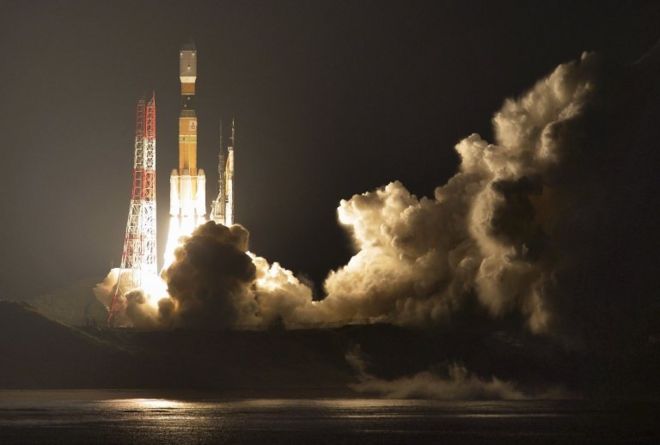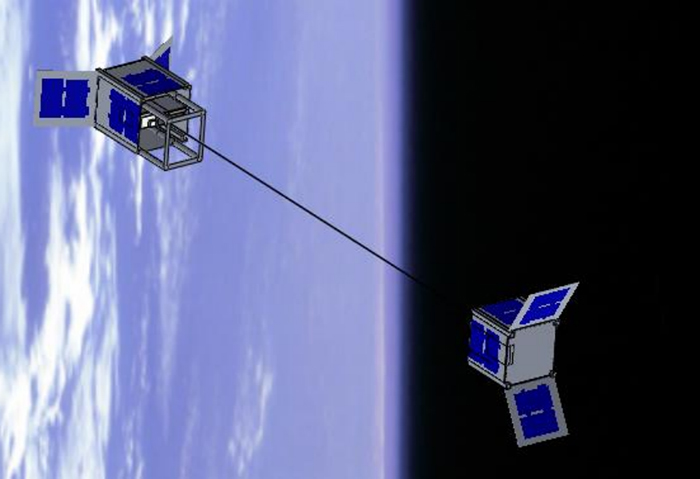日本發射貨運飛船 將試驗清除太空垃圾
- 38分鐘前
 AP
AP
日本在鹿兒島縣種子島宇宙中心用H2B火箭成功發射了一艘"鸛"號貨運飛船,用於向國際空間站運送各類物資。
本次發射由日本宇宙航空研究開發機構和三菱重工業公司共同負責。
發射約15分鐘後,"鸛"號貨運飛船與火箭成功分離,進入預定軌道,預計將於13日夜間至14日清晨與國際空間站對接。
"鸛"號貨運飛船將為國際空間站帶去食品、水、實驗器材、大型鋰電池以及7個超小型衛星等。
除了運送物資外,"鸛"號飛船此次還肩負著另外一項重任——開展清理太空垃圾的實驗。
"鸛"號貨運飛船將在距地球380公里的太空進行清除太空垃圾的試驗。
研究表明,目前從地面追尋監測的太空垃圾中,大於10厘米的約有2萬個,1厘米以上的多達50萬個。
這些垃圾在低軌道速度驚人,秒速高達7公里,約90分鐘繞地球一圈,與人造衛星和太空站相撞的可能性不可輕視。
屆時,"鸛"號貨運飛船將釋放出一條金屬導索,使其吸附到太空垃圾的表面,通過金屬導索向其放電,利用物體在磁場中通電後會發生運動的原理,讓其減速。在低於圍繞地球旋轉所需的速度後,墜入大氣層,與大氣層摩擦燒燬。
The idea of a space elevator to lift us into orbit is one of the oldest concepts in sci-fi, but thanks to the efforts of scientists in Japan, we might soon be seeing this fantastic feat of engineering become a reality at last.
A mini satellite called STARS-C (Space Tethered Autonomous Robotic Satellite-Cube) is heading to the International Space Station in the coming months and is a prototype design that could form the basis of a future space elevator.
Once STARS-C has been delivered – on some to-be-determined date after the Northern Hemisphere's summer – its makers at Shizuoka University will put it to the test: the orbiter will split into two 10-cm (3.94-inch) cubes and spool out a thin 100-metre tether made of Kevlar between them.
If plans for a space elevator are to get off the ground, a super-strong tether like this will one day winch people and supplies up from the Earth, so these tests are going to be crucial in finding if this kind of project can actually work.
The satellite is the invention of engineers Yoshiki Yamagiwa and Masahiro Nomi, who came up with the concept in 2014 and submitted their idea to the Japan Aerospace Exploration Agency (JAXA). STARS-C will eventually be launched from the Kibo module on the ISS, owned by JAXA.
"The satellites move not just vertically, but horizontally as well when we expand their tethers," Yamagiwa told The Asahi Shimbun. "As data must be collected in detail to control the satellite in space with precision, we hope to do it properly this time."
An earlier microsatellite experiment, led by scientists at Kagawa University, failed in this respect, not collecting enough data for it to be useful.
Ham radio frequencies are going to be used to control and get feedback from STARS-C, and to that end the team is asking for amateur radio operators on the ground to help collect signals.
STARS-C, which weighs 2.66 kilograms (5.68 pounds), is also going to help scientists explore ways in which space debris might be cleared up from around the edge of the atmosphere – if it can't pull people into orbit, it could at least catch floating space junk.
Also in the satellite cube's favour is the fact it was built for just $98,000, which isn't too much of an outlay in terms of the usual high costs of space equipment.
 Credit: Shizuoka University
Credit: Shizuoka University
If you're new to the whole space elevator concept, it's a proposal that's exactly what it sounds like: a towering shaft or crane to push or pull people from Earth into space and back again. The main counterweight (in this case, the STARS-C) and its tether would be kept in place with the help of centrifugal force as the planet rotates.
It might sound kind of unbelievable, but if scientists can pull it off, working space elevators could revolutionise how we get into orbit, using a lot less fuel and needing a lot less money than the rockets we rely on today. We can't wait to see how STARS-C goes in testing.
沒有留言:
張貼留言